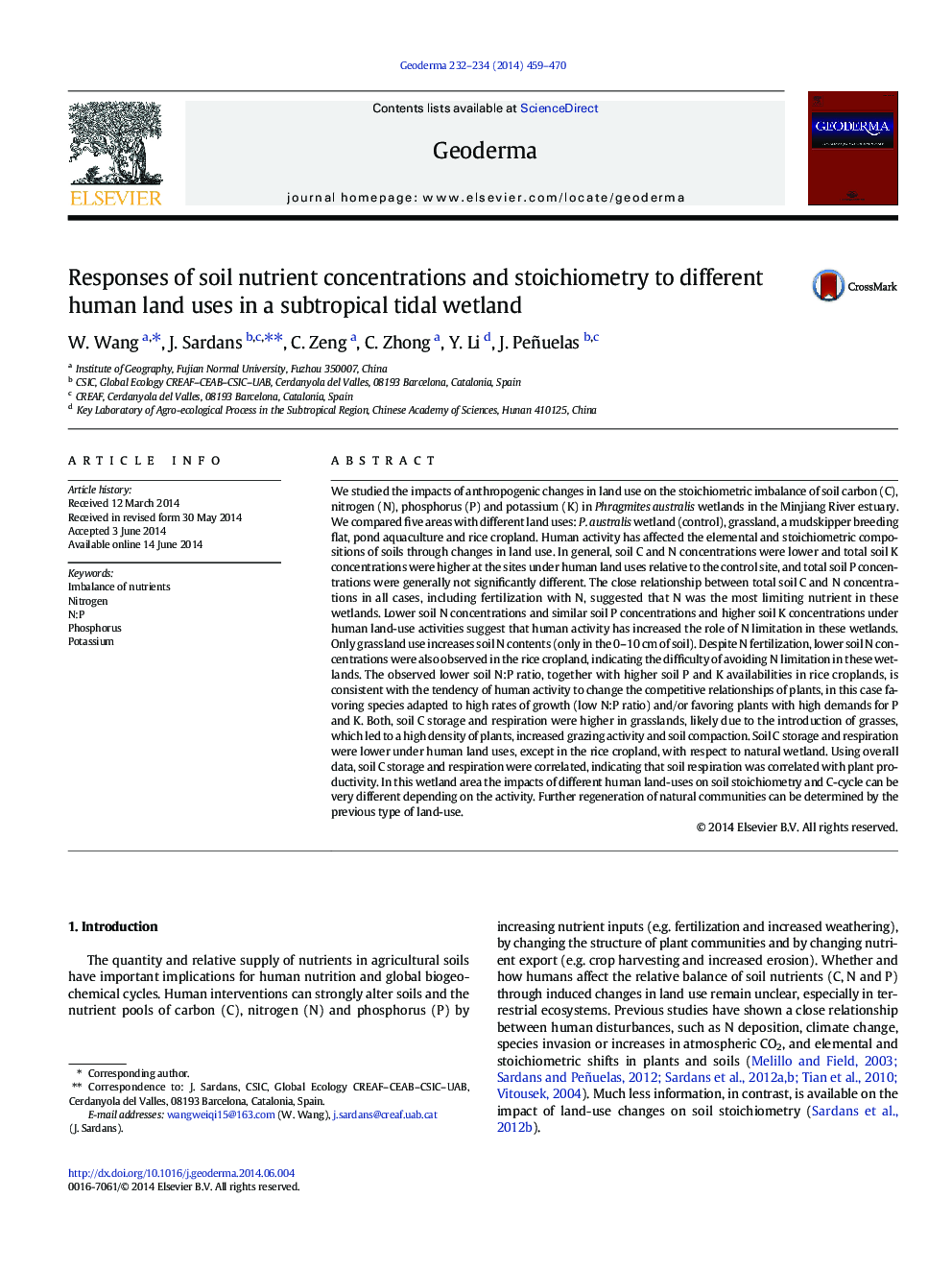| Article ID | Journal | Published Year | Pages | File Type |
|---|---|---|---|---|
| 6408764 | Geoderma | 2014 | 12 Pages |
â¢Human activity increases total soil K and available-P concentrations.â¢Despite low soil N:P ratio, human activities decrease even more the soil N:P ratios.â¢These decreases of soil N:P are linked with the presence of high growth rate species.â¢Human activities decrease soil C and N concentrations affecting C storing capacity.â¢These soil stoichiometry changes can influence the regeneration of natural vegetation.
We studied the impacts of anthropogenic changes in land use on the stoichiometric imbalance of soil carbon (C), nitrogen (N), phosphorus (P) and potassium (K) in Phragmites australis wetlands in the Minjiang River estuary. We compared five areas with different land uses: P. australis wetland (control), grassland, a mudskipper breeding flat, pond aquaculture and rice cropland. Human activity has affected the elemental and stoichiometric compositions of soils through changes in land use. In general, soil C and N concentrations were lower and total soil K concentrations were higher at the sites under human land uses relative to the control site, and total soil P concentrations were generally not significantly different. The close relationship between total soil C and N concentrations in all cases, including fertilization with N, suggested that N was the most limiting nutrient in these wetlands. Lower soil N concentrations and similar soil P concentrations and higher soil K concentrations under human land-use activities suggest that human activity has increased the role of N limitation in these wetlands. Only grassland use increases soil N contents (only in the 0-10Â cm of soil). Despite N fertilization, lower soil N concentrations were also observed in the rice cropland, indicating the difficulty of avoiding N limitation in these wetlands. The observed lower soil N:P ratio, together with higher soil P and K availabilities in rice croplands, is consistent with the tendency of human activity to change the competitive relationships of plants, in this case favoring species adapted to high rates of growth (low N:P ratio) and/or favoring plants with high demands for P and K. Both, soil C storage and respiration were higher in grasslands, likely due to the introduction of grasses, which led to a high density of plants, increased grazing activity and soil compaction. Soil C storage and respiration were lower under human land uses, except in the rice cropland, with respect to natural wetland. Using overall data, soil C storage and respiration were correlated, indicating that soil respiration was correlated with plant productivity. In this wetland area the impacts of different human land-uses on soil stoichiometry and C-cycle can be very different depending on the activity. Further regeneration of natural communities can be determined by the previous type of land-use.
